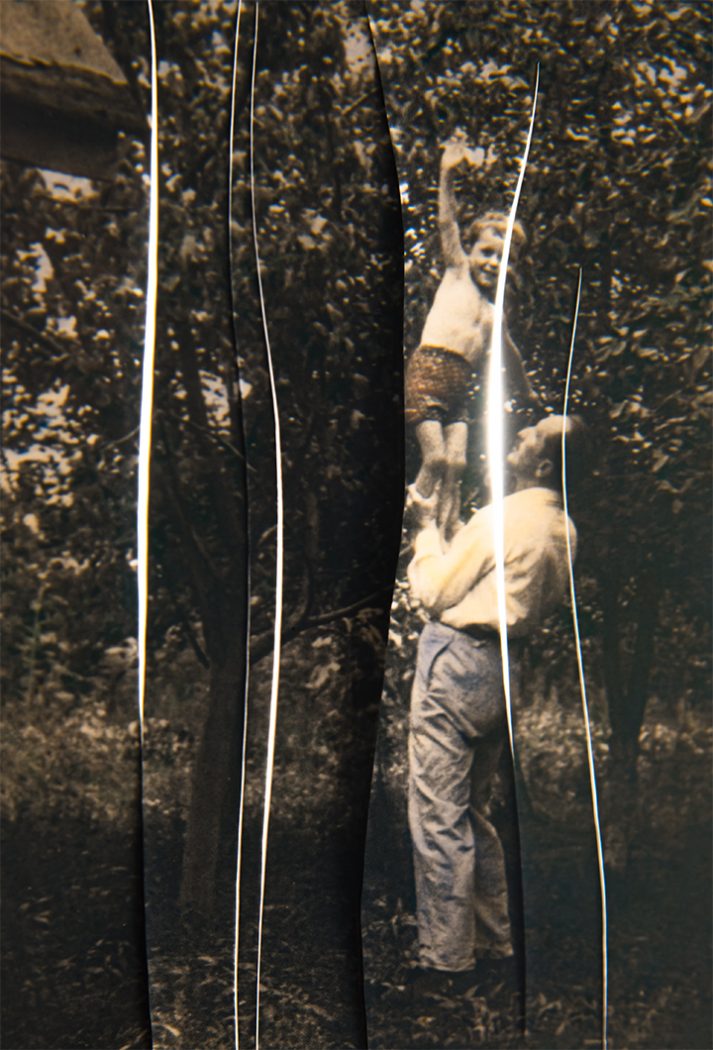Image caption: A process image by Amy Friend, part of her body of work commissioned by The New York Times Magazine in 2021.
Originally published in The Brock News | WEDNESDAY, MARCH 23, 2022 | by Gillian Minaker
When artist and Brock University Professor Amy Friend was contacted by the deputy art director for The New York Times Magazine inviting her to collaborate on an article, she was immediately intrigued.
Friend, Chair and Associate Professor of Visual Arts (VISA), was struck by the enduring nature of the theme of the piece — focused on loss — written by author Meg Bernhard, and was thrilled to be commissioned for her photography by the weekly publication boasting 4.4 million print readers and a digital readership of 7.7 million.
The article “What if There’s No Such Thing as Closure” discusses the work of social scientist and academic Pauline Boss surrounding various types of loss. Specifically, the 87-year-old scholar is well known for her theory of ‘ambiguous loss’ developed in the 1970s with roots in family psychology.
Boss’s academic research on the subject has seen a resurgence in relevance and popularity given the world events of the past few years, most notably the COVID-19 global pandemic and associated trauma and loss experienced by many, often without the ability to grieve and mourn as was previously done in many cultures.
Friend said the framework of ‘ambiguous loss’ resonated with her because of her recent inability to communicate with her father after he had a stroke.

A process image by Amy Friend, part of her body of work
commissioned by The New York Times Magazine in 2021.
“This commission bridged with my personal experience given that loss is not necessarily death-specific,” she said.
Friend worked with the art director in a collaborative manner and greatly enjoyed the creative editorial process.
“This was particularly engaging for me, as creating art can sometimes be a solitary process,” she said. “I thought through the conversations and responded to the feedback from the NYT Magazine team.”
Engaging with this type of professional process relates back to the classroom for Friend, as such collaborations introduce students to the possibilities of how fine arts practice integrates with mainstream media. It also demonstrates to aspiring student artists the importance of being paid for the creative work they do.
“Creative practice enters the world through multiple avenues. It folds into the cultural sector, holds a place in the economy and is a vital component of societal interaction,” said Friend.
In addition to The New York Times Magazine, Friend recently had her work featured in Aesthetica Magazine from her bodies of work “Tiny Tears Fill An Ocean and Multi-verse,” and Musee Magazine, a photography magazine with a section focusing on women in photography.
Friend has international exhibitions coming up this spring in Paris at In Camera Gallery and at Bildhalle Gallery in Amsterdam. In June (pending travel restrictions), her work will be shown Ricami Gallery in Trapani, Sicily, where she has been invited to give an artist’s talk to local communities. This would not be her first introduction to the Sicilian culture; she has artwork in the permanent collection in the Foundation Orestiadi in Gibellina.
